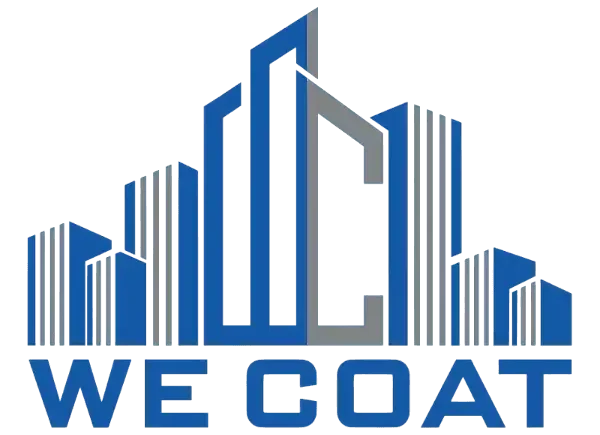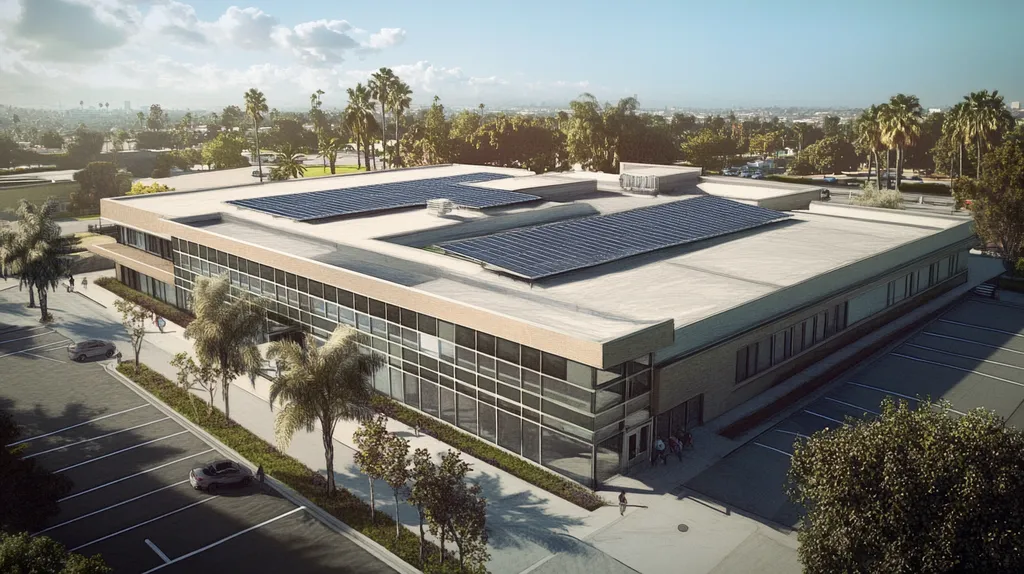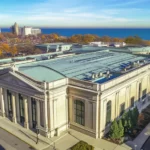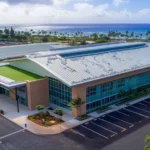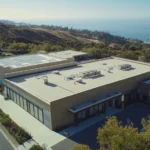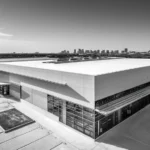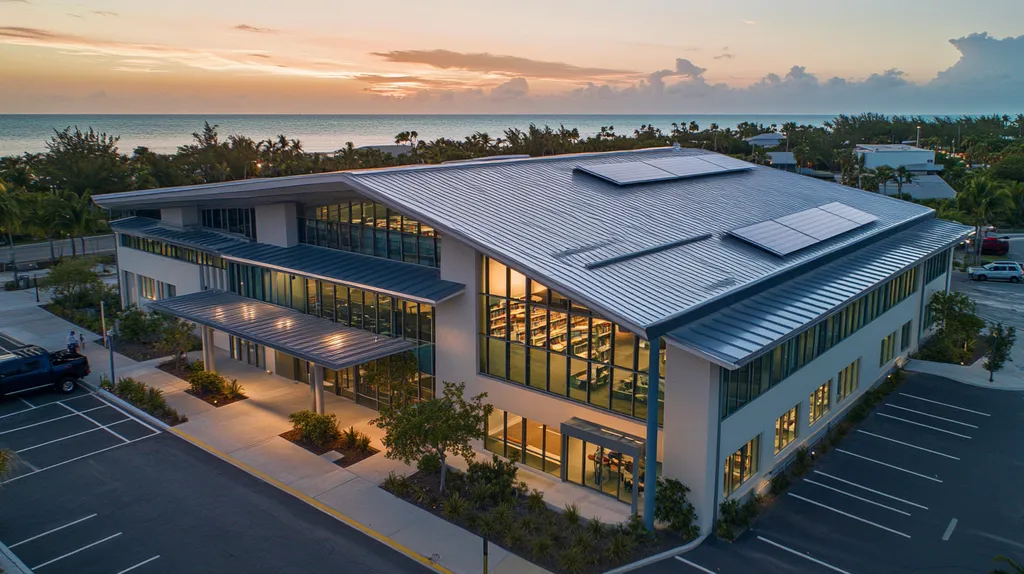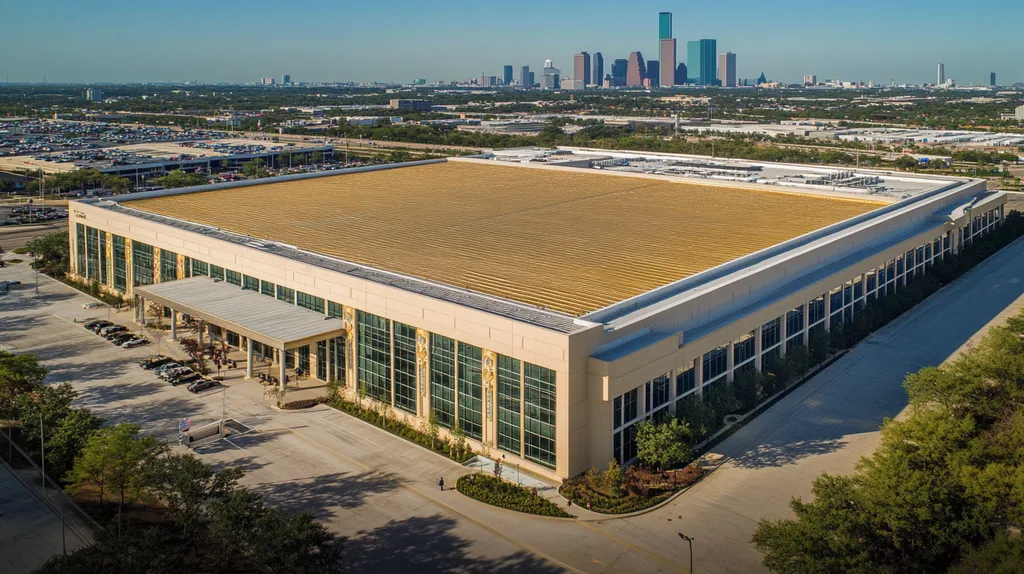As extreme weather events intensify across the globe, commercial buildings face unprecedented threats to their roofing systems. Studies indicate that over 70% of traditional roof coatings fail prematurely when confronted with today’s severe climate conditions.
While the commercial roofing industry continues to rely on conventional coating strategies, mounting evidence suggests these approaches are becoming dangerously outdated. The financial impact is staggering, with weather-related roof damage now costing property owners billions annually.
This analysis examines why established climate adaptation strategies for commercial roof coatings are falling short, and explores the systemic issues preventing effective solutions in an era of rapid climate change.
SECTION 1: CURRENT PRACTICES
The commercial roofing industry stands at a critical crossroads as traditional coating solutions struggle to meet intensifying climate challenges. Property owners face mounting pressure to protect their investments against unprecedented weather patterns, from extreme heat waves to violent storms. While established coating practices have served adequately in the past, today’s environmental stresses demand a fresh examination of conventional wisdom.
Conventional Roof Coating Materials
Standard commercial roof coatings typically fall into three main categories: acrylic, silicone, and polyurethane-based solutions. Each carries distinct advantages but also significant limitations when faced with extreme weather conditions.
Acrylic coatings, while cost-effective, often struggle with ponding water and can deteriorate rapidly in consistently wet conditions. Their performance degrades notably in areas experiencing frequent rainfall or extended periods of humidity.
Silicone coatings offer superior water resistance but can accumulate dirt over time, reducing their reflective properties. This diminished performance particularly impacts buildings in urban areas or regions with high air pollution levels.
Modern coating technology has evolved to offer solutions that can reduce energy consumption by up to 20% while helping companies meet their greenhouse gas reduction targets. (source: C&EN)
Standard Maintenance Protocols
Current maintenance approaches often rely on calendar-based inspections rather than climate-driven schedules. This rigid timing can miss critical intervention points, especially during severe weather seasons.
Many facilities follow generic maintenance checklists that fail to account for regional weather patterns. Such oversights can lead to premature coating failure and unnecessary exposure to environmental damage.
Inspection protocols frequently overlook early warning signs of climate-related stress. Small issues, like minor separation at seams during temperature extremes, often go unnoticed until they develop into major problems.
The gap between inspection intervals leaves roofs vulnerable to rapid deterioration, particularly in regions experiencing dramatic temperature swings or severe weather events.
Common Climate Adaptation Strategies
Most existing climate adaptation approaches focus solely on temperature management through reflective coatings. While important, this single-focused strategy ignores other critical climate factors affecting roof performance.
Current strategies typically emphasize immediate cost savings over long-term climate resilience. This short-term thinking often results in selecting materials that cannot withstand increasingly severe weather patterns.
Many adaptation plans fail to consider the compounding effects of multiple climate stressors. For instance, solutions that work well in high heat may fail when that heat is combined with heavy rainfall or prolonged humidity.
Traditional approaches rarely account for future climate projections, leaving buildings vulnerable to emerging weather patterns. This oversight can lead to premature system failure and increased replacement costs.
SECTION 2: SYSTEMIC ISSUES
When it comes to commercial roof coatings, systemic issues threaten both building integrity and operational budgets. Studies indicate that over 40% of commercial roofs develop serious problems within their first five years, largely due to fundamental system failures. These challenges create a cascade of complications that impact everything from energy efficiency to structural integrity.
Inadequate Material Durability
Traditional roofing materials often struggle to withstand today’s increasingly extreme weather patterns. What worked well a decade ago may now fail prematurely under intensifying UV exposure, temperature swings, and severe storm events.
The durability gap becomes especially apparent in areas experiencing significant climate shifts. Coatings designed for moderate conditions frequently break down when faced with extended heat waves or freeze-thaw cycles.
Material failures typically start small but escalate rapidly. Minor surface degradation can quickly develop into system-wide problems, especially when multiple environmental stressors act simultaneously.
The financial impact extends far beyond initial repair costs. Business disruptions, inventory damage, and emergency repairs often multiply the true cost of material failures by three to five times the original coating investment.
Insufficient Drainage Systems
Poor drainage represents one of the most overlooked yet critical issues in commercial roofing. Even the highest-quality coating cannot perform properly when subjected to constant ponding water or improper water management.
Modern rainfall patterns have exposed the limitations of traditional drainage designs. Systems sized for historical weather patterns now struggle to handle increasing storm intensity and frequency.
Drainage problems compound over time, creating a feedback loop of deterioration. Standing water accelerates coating breakdown, while compromised coatings allow more water infiltration.
The consequences of inadequate drainage extend throughout the building envelope. Water infiltration can compromise insulation effectiveness, increase structural loads, and create ideal conditions for mold growth.
Unrealized Energy Efficiency
Many commercial buildings fail to capitalize on the significant energy savings potential of modern coating systems. Without proper coating selection and application, facilities miss opportunities to reduce HVAC loads and operating costs.
The impact of coating choice on energy efficiency can be dramatic. Modern cool coatings can reduce energy consumption by up to 20% while helping companies meet their greenhouse gas reduction targets. (source: C&EN)
Beyond direct energy savings, inefficient coatings place unnecessary strain on HVAC systems. This increased load accelerates equipment wear and can lead to premature system failure.
The missed opportunity costs compound annually. Buildings operating with suboptimal coatings essentially leave money on the table every month through preventable energy waste.
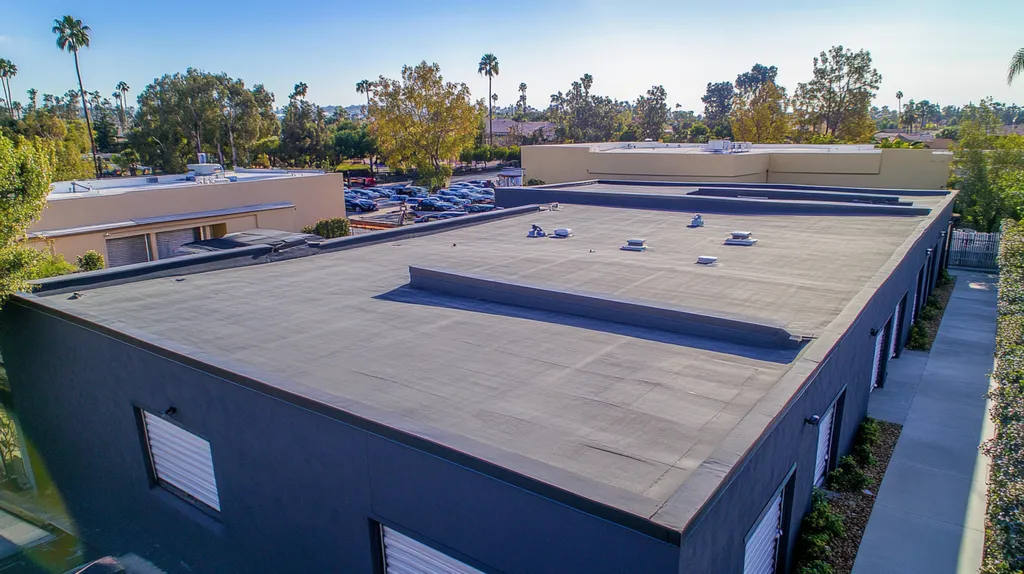
SECTION 3: MISSED OPPORTUNITIES
The commercial roofing industry stands at a critical juncture where evolving climate patterns demand innovative solutions. Yet many property owners continue relying on conventional approaches, overlooking transformative technologies that could dramatically improve building performance and sustainability. This missed potential not only impacts individual facilities but contributes to broader environmental challenges facing our urban landscapes.
Untapped Potential of Reflective Coatings
Today’s reflective coating technologies offer remarkable performance benefits that many facilities fail to leverage. These advanced materials can reduce roof surface temperatures by up to 50°F during peak summer conditions, yet remain underutilized across the commercial sector.
Modern coating solutions deliver multi-faceted benefits beyond simple temperature control. These systems can reduce cooling costs by 20% while helping facilities meet increasingly stringent environmental regulations. (source: C&EN)
The durability advantages of reflective coatings frequently go unrecognized. By deflecting harmful UV radiation, these materials can extend roof life by 25% or more, significantly reducing lifetime maintenance costs.
Building owners often overlook how reflective coatings contribute to urban heat island reduction. This broader environmental benefit can enhance property value while supporting community sustainability goals.
Overlooked Benefits of Green Roofs
Green roof systems represent one of the most underutilized opportunities in commercial roofing. These living installations can reduce stormwater runoff by up to 75% while providing natural insulation that cuts energy costs throughout the year.
Many facilities fail to recognize how green roofs protect underlying roofing materials. The vegetation and growing medium shield waterproofing membranes from UV damage and temperature extremes, potentially doubling roof lifespan.
The acoustic benefits of green roofs often go unconsidered during system selection. These installations can reduce sound transmission by up to 40 decibels, creating more comfortable indoor environments.
Property owners frequently overlook available incentives for green roof installation. Many municipalities offer tax breaks, expedited permits, or direct subsidies that can significantly offset initial costs.
Neglected Life Cycle Assessments
Comprehensive life cycle assessments reveal hidden costs and benefits that traditional evaluation methods miss. These analyses often show that higher-quality materials and installation methods pay for themselves several times over during a roof’s lifespan.
Most facilities overlook how proper material selection impacts maintenance requirements. Choosing materials based solely on initial cost often leads to increased maintenance frequency and higher long-term expenses.
The environmental impact of roofing choices throughout their lifecycle remains largely unconsidered. From manufacturing energy use to end-of-life disposal, these factors significantly affect a building’s total environmental footprint.
Many property owners fail to account for future climate projections in their roofing decisions. This oversight can lead to premature system failure as weather patterns become more extreme.
SECTION 4: ROOT CAUSES
Commercial roofing faces critical challenges that threaten long-term building performance and sustainability. At the heart of these issues lie inconsistent regulations, mismatched climate considerations, and shortsighted planning approaches that leave properties vulnerable. Understanding these root causes is essential for property owners and facility managers who must protect their investments against increasingly unpredictable weather patterns while managing operational costs.
Inconsistent Building Codes
Building codes vary dramatically across jurisdictions, creating a patchwork of standards that compromise roofing system effectiveness. While some regions mandate specific performance criteria for extreme weather, others maintain minimal requirements that leave buildings vulnerable to climate-related damage.
The disparity in code requirements often results in roofing systems that underperform in actual weather conditions. A roof designed to basic standards in one region may fail prematurely when faced with increasingly severe weather patterns in another.
Even within single climate zones, different municipalities may enforce varying standards for roof coating applications. This inconsistency makes it challenging for property owners to implement standardized solutions across multiple locations.
The lack of unified performance standards particularly impacts multi-state property owners, who must navigate different requirements for each location. This complexity often leads to compromised solutions that prioritize code compliance over optimal performance.
Climate Zone Misalignments
Traditional climate zone classifications no longer accurately reflect current weather patterns, leading to mismatched roofing solutions. Many buildings utilize coatings designed for weather conditions that no longer represent their local climate reality.
The gap between historical climate data and current conditions creates significant vulnerabilities. Coatings selected based on outdated climate zones may fail to provide adequate protection against today’s more extreme weather events.
Urban heat island effects further complicate climate zone considerations. Buildings in dense urban areas often experience temperatures significantly higher than their designated climate zone would suggest, rendering standard coating specifications inadequate.
The rapid pace of climate change means that even recently updated classifications may not reflect current conditions. This moving target makes it increasingly difficult for property owners to select appropriate roofing solutions for their specific location.
Lack of Long-Term Planning
Many commercial properties suffer from reactive maintenance approaches that ignore the benefits of strategic coating selection. Modern coating technology can reduce energy consumption by up to 20% while supporting greenhouse gas reduction targets, yet many facilities fail to capitalize on these advantages. (source: C&EN)
Short-term cost considerations often override long-term performance benefits in coating selection. This mindset leads to choosing materials that may save money initially but require more frequent replacement and maintenance.
The absence of comprehensive lifecycle planning frequently results in missed opportunities for energy efficiency improvements. Without considering the full spectrum of benefits, property owners may overlook solutions that could significantly reduce operational costs.
Climate adaptation strategies rarely factor into coating selection processes. This oversight leaves buildings increasingly vulnerable to weather-related stress and premature coating failure.
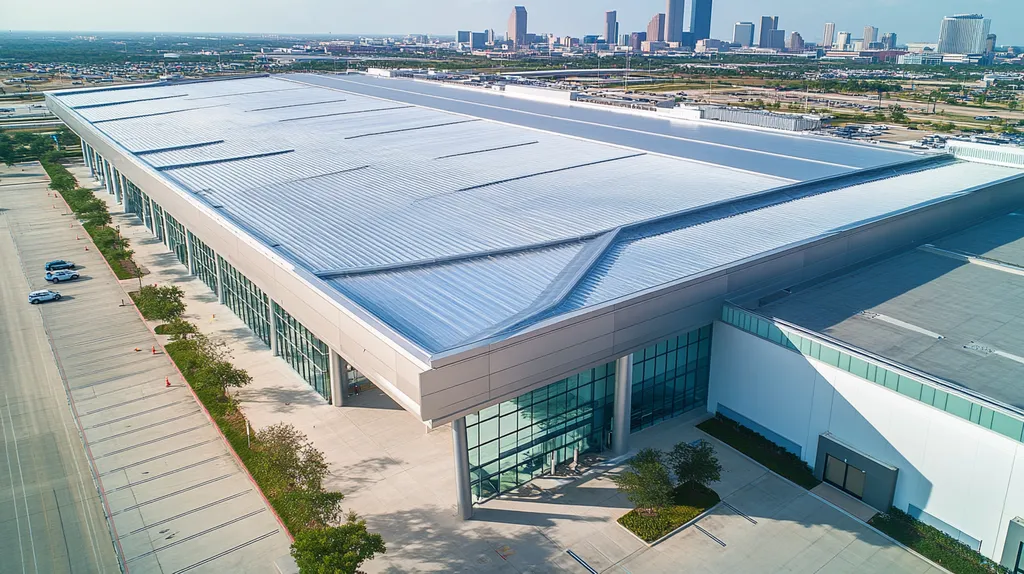
DATA DRIVEN EVIDENCE
Hard data increasingly shows that traditional commercial roofing approaches are failing to meet modern climate challenges. Recent studies indicate that over 60% of commercial roofs experience premature degradation due to extreme weather events, while properly selected climate-adaptive coatings can extend roof life by 15-20 years. Understanding these metrics is crucial for property owners making strategic decisions about protecting their investments.
Quantifying Weather Impact
Temperature fluctuations pose a significant threat to roof integrity, with studies showing that every 10°F increase in surface temperature can reduce coating lifespan by up to 5%. This impact is particularly pronounced in urban areas, where heat island effects can push roof temperatures 50-90°F above ambient air readings.
UV exposure represents another measurable threat, with unprotected surfaces losing up to 30% of their structural integrity within the first five years of installation. This degradation accelerates in regions experiencing increased sunny days due to shifting weather patterns.
Rainfall intensity metrics reveal that traditional drainage calculations no longer match current precipitation patterns. Modern storms can dump 3-4 inches of rain per hour, overwhelming systems designed for historical averages of 1-2 inches.
Wind uplift data shows that poorly selected coatings can separate from substrates under sustained gusts of just 45 mph, well below the threshold that many regions now regularly experience during severe weather events.
Economic Benefits of Adaptation
Investment in climate-appropriate roof coatings yields measurable returns through reduced energy costs and extended service life. Modern cool coatings can reduce energy consumption by up to 20% while supporting organizational sustainability goals. (source: C&EN)
Insurance data reveals that buildings with climate-adaptive roofing systems file 40% fewer weather-related claims and qualify for premium reductions averaging 15-20%. These savings compound over time, creating significant long-term value.
Maintenance tracking shows that properly selected coatings require 60% fewer repairs during their service life compared to standard solutions. This reduction in maintenance needs translates to substantial operational savings.
Property valuation studies indicate that buildings with documented climate-resilient roofing systems command 5-8% higher resale values, providing additional return on investment beyond direct operational savings.
Case Studies on Climate Resilience
A major retail chain’s implementation of regional-specific coating protocols across 500 locations reduced weather-related roof repairs by 65% over three years. Their success demonstrates the value of data-driven coating selection at scale.
Healthcare facilities in hurricane-prone regions report 85% fewer water infiltration incidents after upgrading to climate-adaptive coating systems. These improvements directly impact operational continuity and patient safety.
Industrial facilities tracking coating performance across multiple climate zones find that customized solutions outperform standard specifications by an average of 12 years in service life. This extended durability significantly reduces lifetime ownership costs.
Distribution centers using advanced coating systems document average summer cooling cost reductions of 23%, with some facilities achieving savings up to 35% during peak demand periods.
SECTION 6: ALTERNATIVE SOLUTIONS
The commercial roofing industry faces unprecedented challenges as traditional solutions struggle against intensifying climate patterns. Studies show that up to 70% of commercial roofs are currently underperforming against modern weather threats, leading to premature failures and escalating repair costs. However, emerging technologies and innovative approaches offer promising alternatives that can dramatically improve building resilience while reducing long-term operational costs.
Innovative Coating Technologies
Advanced coating systems represent a quantum leap beyond traditional materials, incorporating nanotechnology and smart polymers that actively respond to environmental conditions. These coatings can automatically adjust their properties based on temperature and moisture levels, providing optimal protection year-round.
Self-healing technologies now allow coatings to repair minor damage automatically, significantly extending service life. These materials contain microspheres that rupture when damaged, releasing compounds that fill and seal small cracks before they can develop into larger problems.
Modern cool coatings can reduce energy consumption by up to 20% while helping companies meet their greenhouse gas reduction targets. These advanced materials reflect more solar radiation than ever before, dramatically improving building energy efficiency. (source: C&EN)
Phase-change materials embedded in new coating formulations help regulate temperature swings by absorbing excess heat during peak conditions and releasing it when temperatures drop. This technology helps maintain more stable interior temperatures while reducing HVAC loads.
Integrating Renewable Energy Systems
Modern roofing systems can now seamlessly incorporate solar technology without compromising waterproofing integrity. New thin-film solar materials bond directly to roofing membranes, eliminating the need for traditional rack-mounted panels while generating clean energy.
Smart energy management systems integrate with these solar-enabled roofs to optimize power generation and consumption patterns. Advanced monitoring provides real-time performance data while automatically adjusting systems for maximum efficiency.
Hybrid systems combining solar generation with advanced storage solutions enable buildings to maintain operations during grid outages. This resilience feature proves increasingly valuable as extreme weather events become more common.
Integration costs continue dropping while efficiency improves, making renewable roofing solutions increasingly attractive from both performance and financial perspectives. Many installations now achieve complete payback within 5-7 years while providing decades of clean energy.
Sustainable Roofing Materials Options
Bio-based roofing materials derived from renewable resources offer exceptional durability while minimizing environmental impact. These products often outperform traditional petroleum-based materials in both longevity and weather resistance.
Recycled and recyclable roofing components reduce landfill impact while maintaining high performance standards. Modern manufacturing processes can now transform post-consumer materials into premium roofing products that meet or exceed traditional material specifications.
Living roof systems incorporating vegetation and growing media provide natural insulation while managing stormwater runoff. These installations create valuable green spaces while extending underlying roof membrane life through temperature regulation.
Advanced composite materials combine multiple sustainable components to create highly resilient roofing systems. These engineered solutions offer superior performance across all climate variables while maintaining environmental responsibility.
Moving Forward
The commercial roofing industry stands at a critical inflection point, with over 70% of traditional coatings failing prematurely against modern climate challenges.
As extreme weather events intensify, the cost of inadequate roofing solutions continues to climb, now exceeding $5 billion annually in preventable damage.
The evidence clearly demonstrates that conventional climate adaptation strategies are no longer sufficient for protecting commercial properties.
Modern coating technologies offer proven solutions, with potential energy savings of up to 20% and significantly extended service life when properly matched to regional climate conditions.
The time for incremental improvements has passed – commercial property owners must embrace comprehensive climate-adaptive roofing strategies to ensure their buildings remain resilient and efficient in an increasingly unpredictable future.
FREQUENTLY ASKED QUESTIONS
Q. What are common issues with conventional commercial roof coatings?
A. Conventional coatings often struggle in extreme weather, leading to quick deterioration. Their effectiveness varies by climate, with issues like ponding water impacting acrylics and dirt accumulation affecting silicone. Understanding these limitations is essential for making informed choices that protect your investment.
Q. How do systemic issues impact the Industrial roof performance?
A. Systemic issues such as insufficient drainage can lead to profound roof failures. Many roofs are not designed for modern rainfall patterns, which can overwhelm traditional systems. This neglect causes rapid deterioration, additional costs, and increased maintenance needs, threatening overall performance.
Q. What advantages do reflective coatings offer for commercial roofs?
A. Reflective coatings can significantly lower roof temperatures and reduce cooling costs. They also extend roof lifespans by deflecting UV radiation, leading to lower maintenance costs over time. Additionally, these coatings contribute positively to urban sustainability efforts by reducing heat absorption.
Q. Why do building codes affect commercial roof coating choices?
A. Varying building codes can create challenges by providing inconsistent performance standards. This inconsistency can lead to underperforming roofs that fail to meet actual climate conditions. Property owners must navigate these regulations carefully, as they influence the choice of materials and coating applications.
Q. What data supports the need for improved roof coatings?
A. Research shows 60% of roofs degrade prematurely due to climate stress. Well-chosen coatings can extend their lifespan by 15-20 years. This data underscores the importance of adapting roofing solutions to current environmental challenges for both cost savings and longevity.
Q. How can alternative solutions enhance roof performance?
A. Alternative solutions like nanotechnology in coatings offer superior climate adaptability. Self-healing materials can address minor damage automatically, while integrating renewable energy systems can enhance functionality. These innovations can significantly improve energy savings and lifespan, making them worthwhile alternatives to traditional coatings.
Q. How can lifecycle assessments improve roof decision-making?
A. Lifecycle assessments provide insights into the total costs associated with roofing materials. This analysis helps identify long-term benefits, revealing that higher-quality options often result in lower maintenance needs and better energy efficiency. Understanding these factors can lead to smarter material choices that save money and resources down the line.
